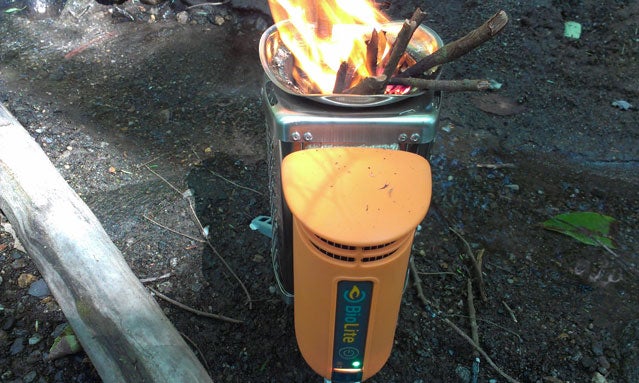Solar panels can charge up your gadgets while camping. Hand-crank generators too. But now there’s a gadget that turns burning wood into electricity, available this month from Brooklyn startup, . The device uses a solid-state component inside that turns the heat energy from the wood into electricity—with an output that matches the juice you get from a USB plug. Nowadays, almost every small device works with USB, so as long as you can keep the fire burning, you’re covered.
I had to know how/if it worked, and I was so excited about the very concept of turning wood into watts that I nearly mauled the FedEx guy bearing the review unit. “It burns wood and charges your cell phone,” I kept saying as I signed for the BioLite. No reaction.
Next thing I did was open the box. The public relations person had thoughtfully included some small pieces of wood to burn in the Biolite in case I didn’t have any. It was high-quality oak with a finely sanded edge. Not sure how people in Brooklyn camp, but elsewhere we typically burn what’s at hand. I took the stove into the woods and found a half-dead hemlock whose lower branches worked nicely as a fuel source.
��
BioLite Stove: Start-Up
I heard about the Biolite stove, which supposedly makes electricity from wood. Does it work?
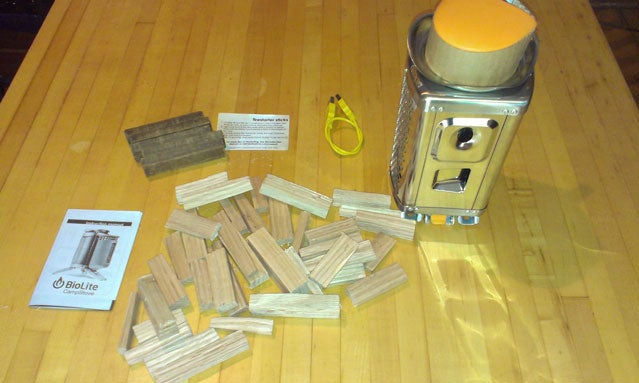
To use the BioLite, you turn on a little fan, powered by a small lithium-ion battery inside the electronics. The fan makes the fire hotter, creating electricity from a solid-state generator inside.��
If I were really camping, I would place an aluminum pot on top of the BioLite and would be heating up my freeze-dried chili about now. The device works as a regular camp stove, making it a co-generation device—heat and electricity. For cooking, it boosts the heat with the small fan, basically the equivalent of making someone in your campsite sit there and blow on the fire. It produces a max of 5.5 kilowatts of heat (although heat is usually measured in BTUs, this amount of heat output is a little more than a small propane camp stove).
After about 10 minutes, the status light on the front console switched from orange to green, signaling that it was up to full power and ready to charge anything with a USB connection.
BioLite Stove: Cell Phone
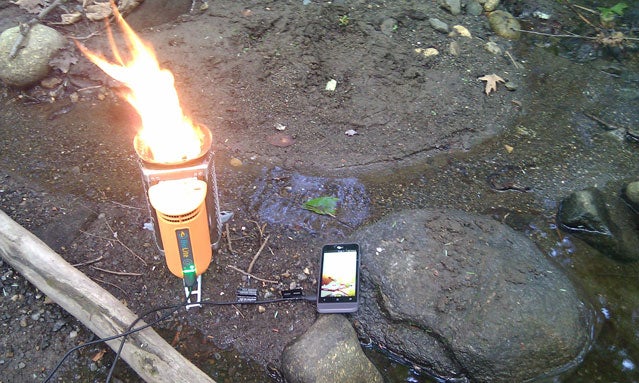
I started easy, with a cell phone. It worked just like at home, with the same duration to reach a full charge. With my phone, it would take about 45 minutes, or in this case, about one large hemlock branch. My MP3 player also charged normally.
BioLite Stove: Fan
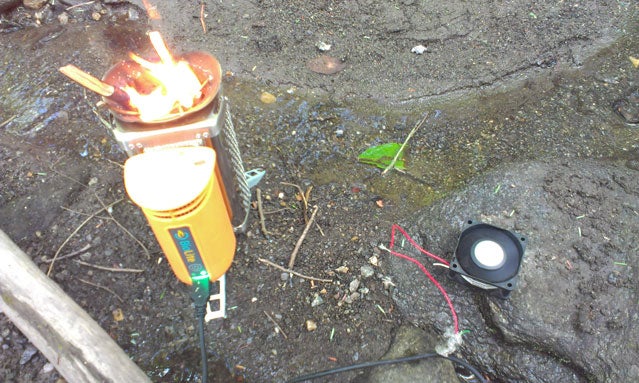
It powered a small fan. What with all the fire, the campsite was sweltering, and this provided a welcome relief.����
BioLite Stove: Incandescent Bulb
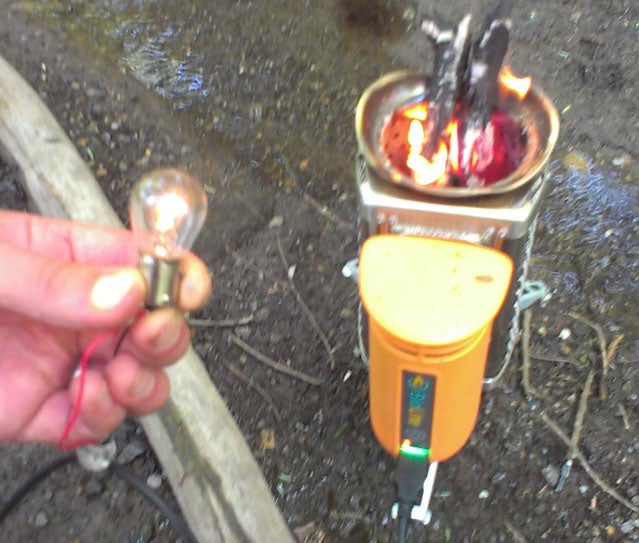
The BioLite powered a small incandescent bulb dimly, but about the same as a laptop would.��
BioLite Stove: Multimeter
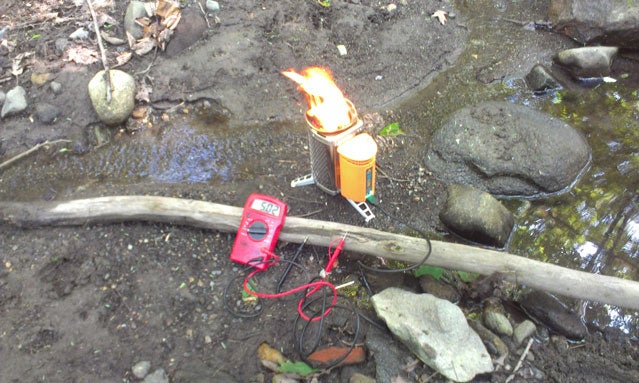
To get a sense of the voltage output of the BioLite, I hacked into an old USB cord and hooked up a multimeter (I always carry a multimeter into the wilderness—you know, just in case.) The device read 5.1 volts, just like the power from a laptop or wall USB charger.��
BioLite Stove: Bottom Line
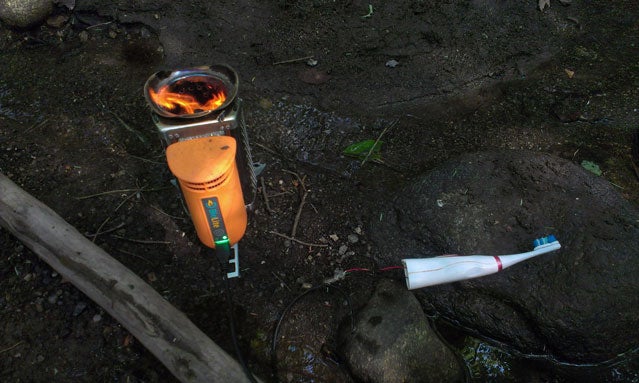
Bottom line: The BioLite stove worked as promised, and was fun to use. It produces continuous power of around 2 watts at the standard 5 volts of a USB cord. For a solar panel to produce the same energy, the panel would have to be about 26 square inches in size—quite a lot of glass to lug around in your pack. Typical hand-crank generators for powering lights and radios do not produce enough amperage to charge a cell phone.
Of course, you have to have wood around. You wouldn’t bring the Biolite mountaineering, however, where you’re above tree line, or to spots where wood is scarce. (Plus, it weighs 2 pounds, 1 ounce.) If you’re in Brooklyn, where finished oak is plentiful, then you wouldn’t have a problem. But for camping in woody areas, it’s a fun process to make your own electricity in order to enjoy some of the comforts of home.


